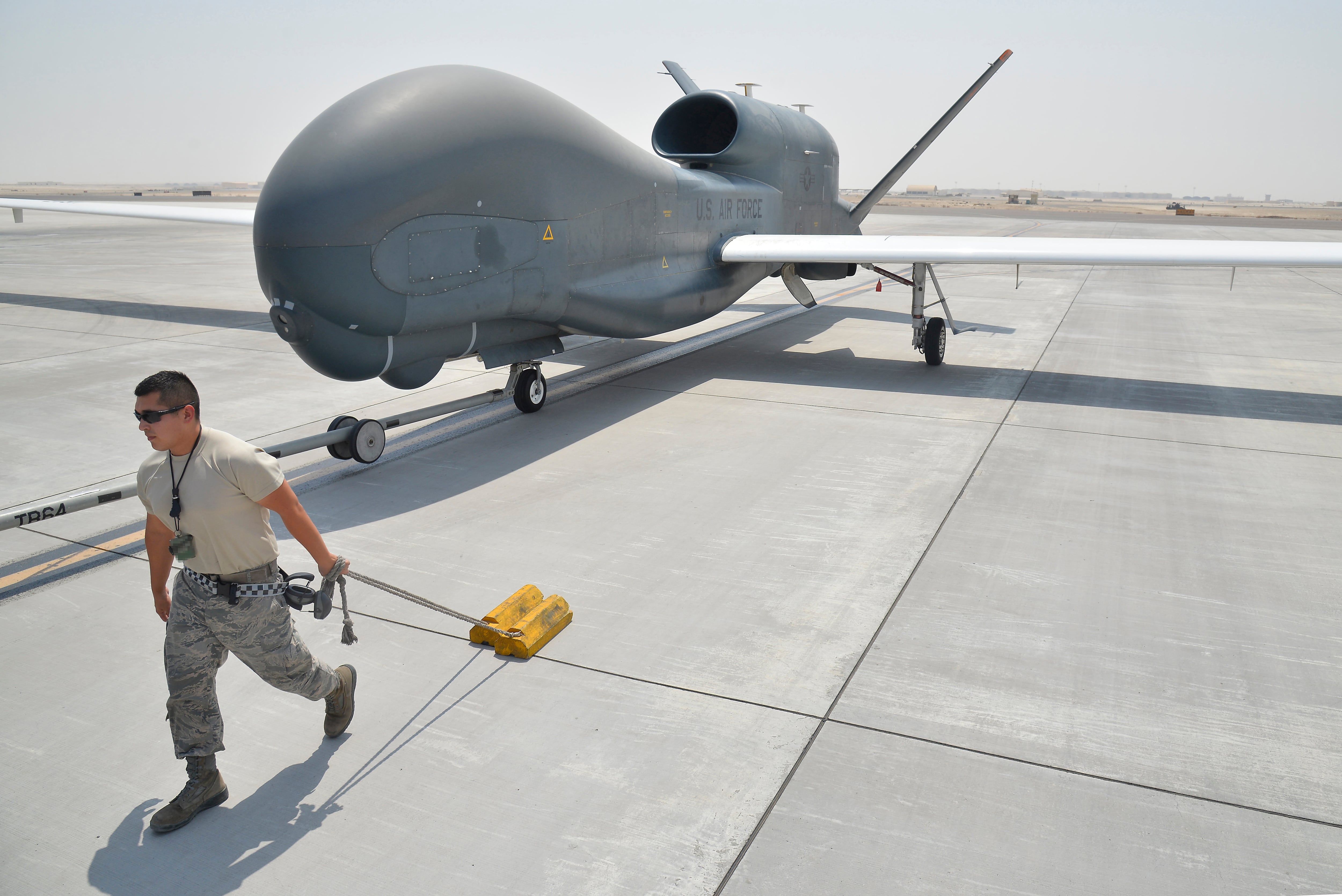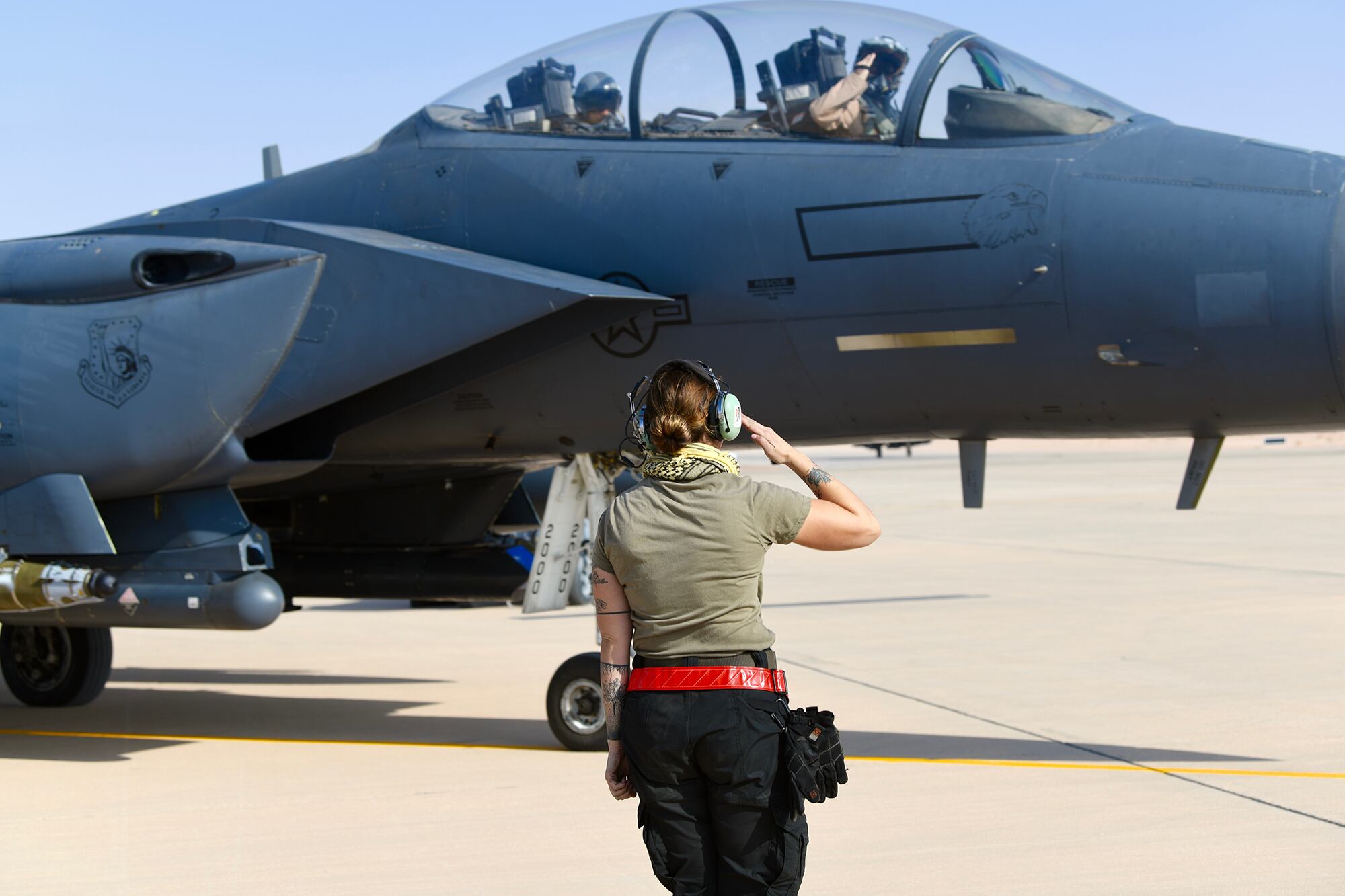In a room packed full of U.S. Air Force personnel this past week, SpaceX founder Elon Musk issued a bold pronouncement: “The fighter jet era has passed. ... Locally autonomous drone warfare is where it’s at, where the future will be.” The reaction in the room was immediate — a collective pause.
News headlines around the world highlighted this pronouncement, and online debates erupted. While Musk certainly succeeded in being provocative, his forecast is less than accurate. Despite impressive gains in autonomous technology, manned fighter aircraft will continue to provide the underpinnings of the air superiority mission for decades into the future.
To put it simply, fighter aviation is one of the most demanding professions in the world. Only a small percentage of individuals can successfully master years’ worth of training and graduate to an operational fighter squadron. Even then it takes years of additional experience in a fighter cockpit to be competent. Nor does the quest stop there, with experienced fighter pilots having to train on a near-daily basis to maintain their skills.
The reason for this is simple: Qualified fighter pilots must be able to master highly aggressive, three-dimensional maneuvering at rates exceeding twice the speed of sound in a highly dynamic battlespace, operate highly sophisticated mission equipment, and face adversaries doing everything in their power to kill them. Success means doing it all over the next day. Failure generally equals death or capture.
Contrast that with the present state of artificial intelligence in a far simpler scenario. Musk’s self-driving cars operate in two dimensions, with predictable traffic laws, and understood human behavior. At the end of 2019, three Tesla cars using their “autopilot” feature crashed. One ran a red light, and the collision resulted in the death of two people. Another hit a parked firetruck with fatal results, and the third hit a police car on a highway. This is not to minimize the accomplishments of self-driving technology. However, it is prudent to point out that the potential of near-term and midterm autonomy should not be conflated with science fiction-like objectives.
It is far more productive to explore the real impact autonomy is having on military aviation. It excels where mission parameters are well-understood, unknowns are minimized and rules are followed. That is why the Air Force has been using autonomous reconnaissance aircraft like the RQ-4 Global Hawk to facilitate intelligence missions around the world. They follow a programmed mission track and return home safe with near certainty.

Forms of autonomy are already resident in fighters like the F-22 and F-35 to assist the pilot with a host of onboard functions. Autonomous aircraft will eventually join manned combat aircraft as mission partners — a concept referred to as manned-unmanned teaming. Tests over the last few years have advanced key aspects of this promising technology. However, this is a far cry from autonomously executing a twisting, turning knife-edge dogfight. Trusting in an autonomous system to determine friend from foe and deploy lethal force without human approval is far from prudent. It is important to recognize that drones, like the MQ-1 Predator and MQ-9 Reaper, are remotely piloted, with humans handling the flying and weapons employment — they are not “terminator-like” killing robots.
In considering this issue, it is crucial to understand that air superiority — the mission that fighter aircraft execute — is literally one of the most important combat capabilities a nation can possess. Britain’s Royal Air Force fighter pilots literally saved their nation during the 1940 Battle of Britain. Conversely, a nation that cannot defend its skies against enemy attack cannot survive — consider Germany in 1945 or Iraq in 1991. Nor are ships at sea, soldiers on the ground, space and cyber facilities, or support aircraft able to last without fighter protection. That is why Musk’s statement elicited a reaction of disbelief from the Air Force audience. These are men and women who put everything on the line to secure the sky. They know the technological art of the possible.
While autonomy is smart to pursue, it has far to go before it can fly and fight against a skilled adversary. Parking a car autonomously is not something to extrapolate into things that are critical to the defense of a nation.
The reality is that America’s current fighter fleet is obsolete. The average age of the Air Force’s fighter inventory is over a quarter of a century. Less than 20 percent are ready to meet advanced threats with stealth technology. That is why programs like the F-35 must rapidly scale as the backbone of America’s air superiority force. The distant promise of autonomy must not be confused with meeting the clear and present threats of today and tomorrow.
Douglas Birkey is the executive director of the Mitchell Institute for Aerospace Studies, where he researches issues relating to the future of aerospace and national security. He previously served as the Air Force Association’s director of government relations.





